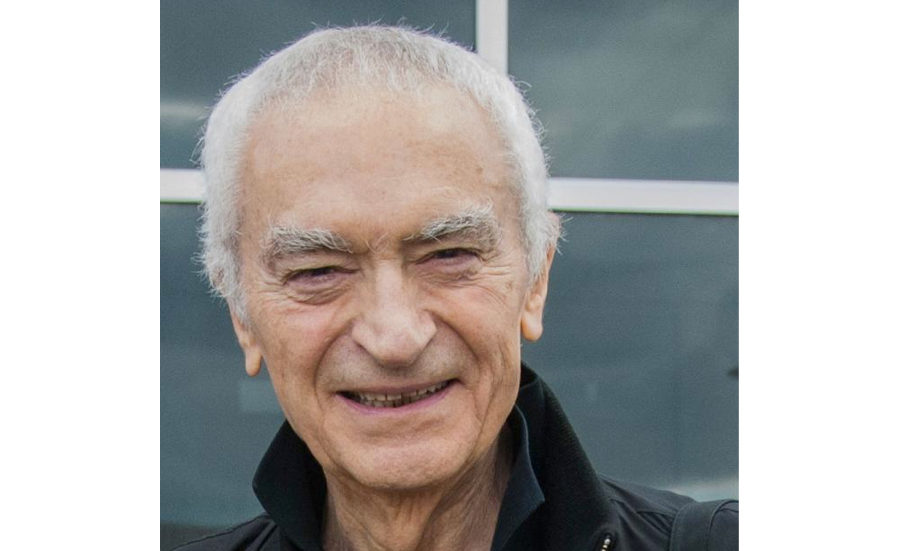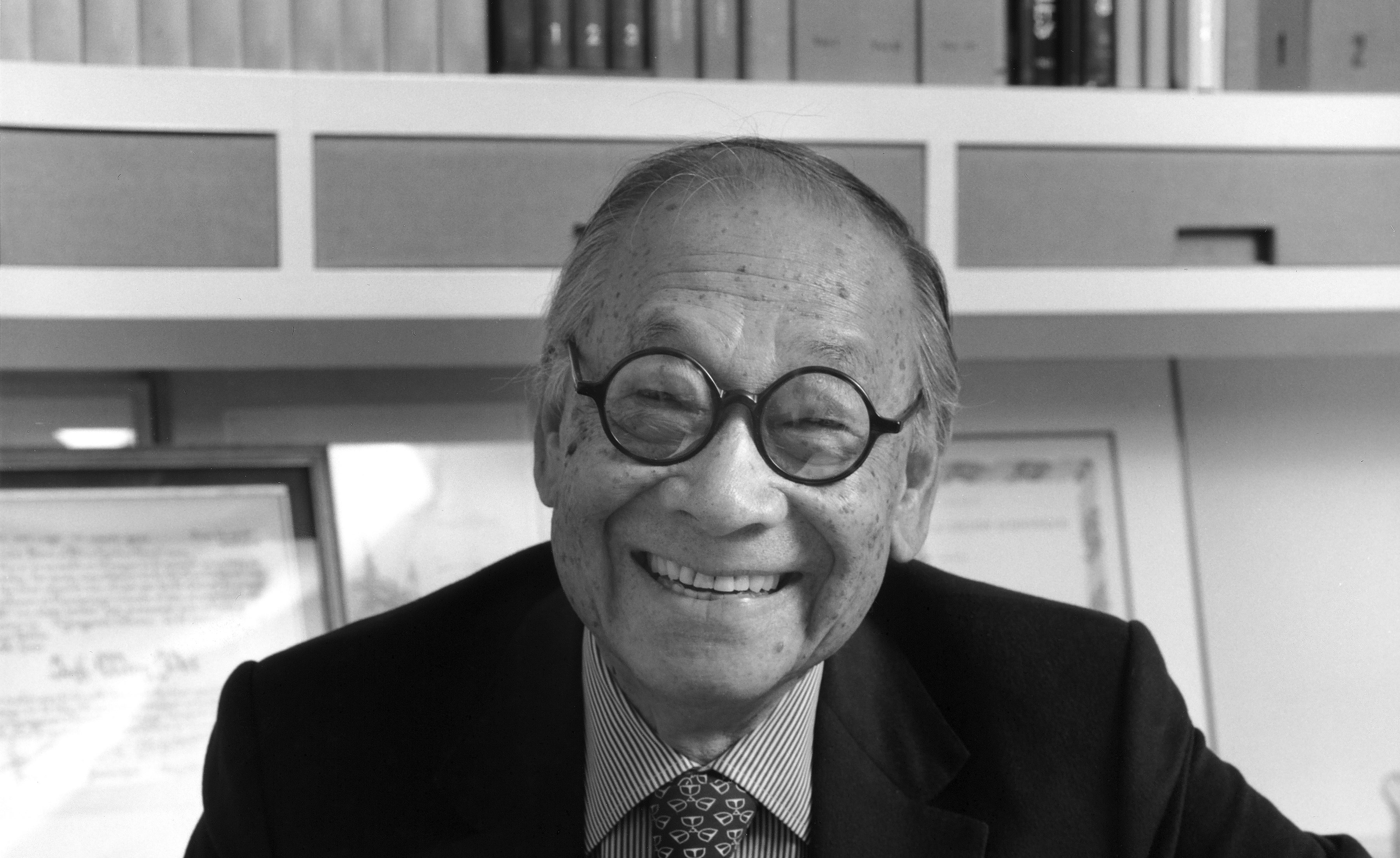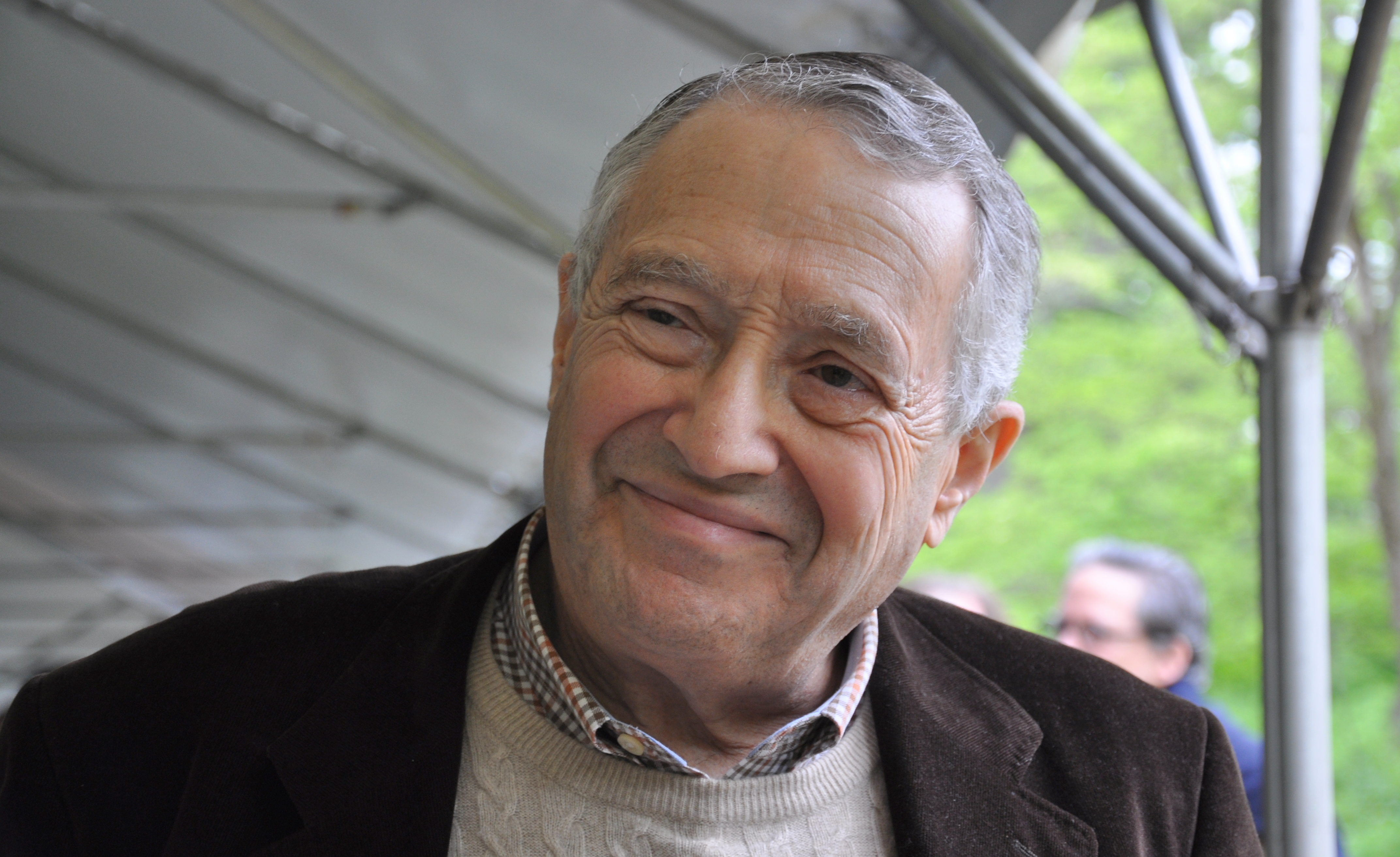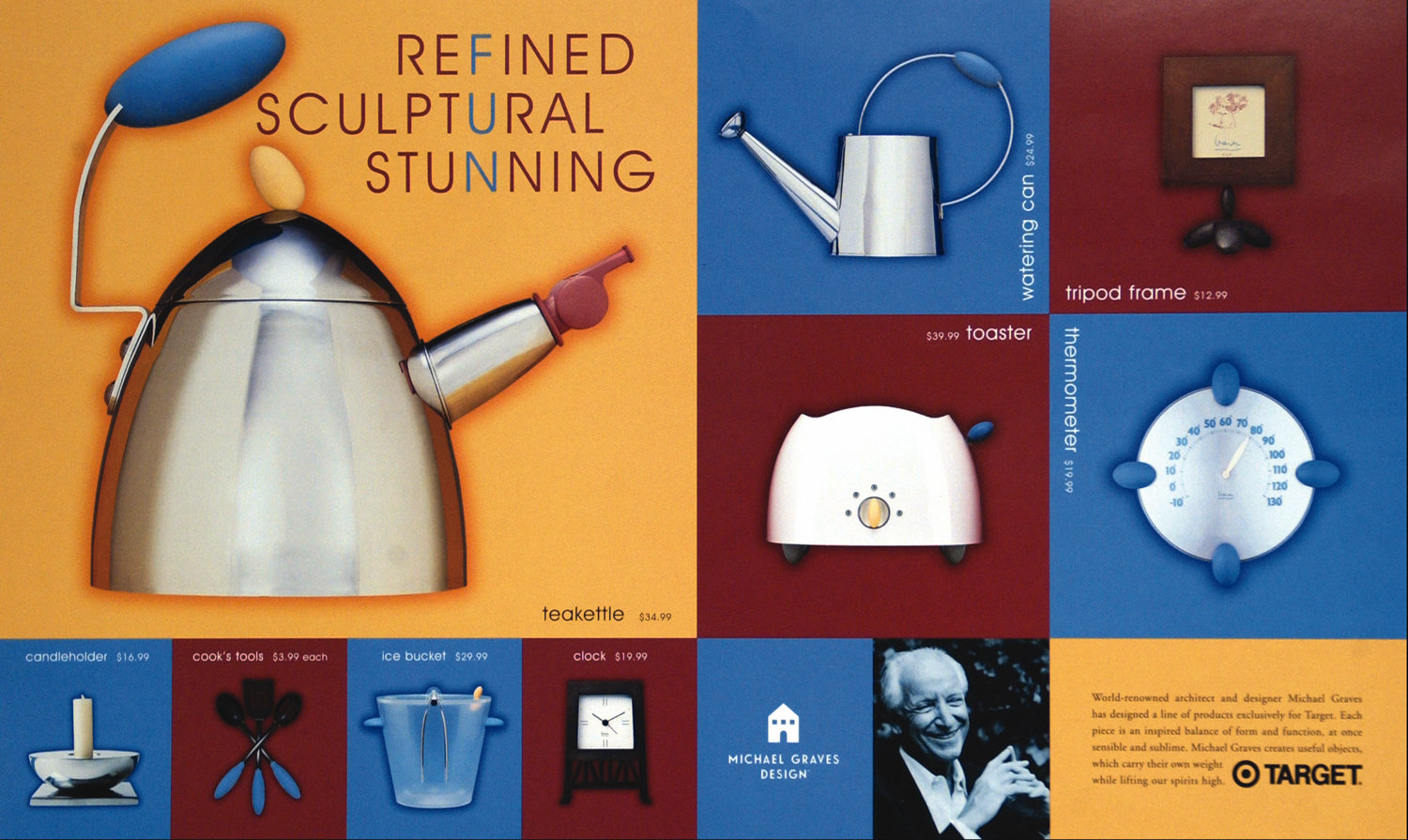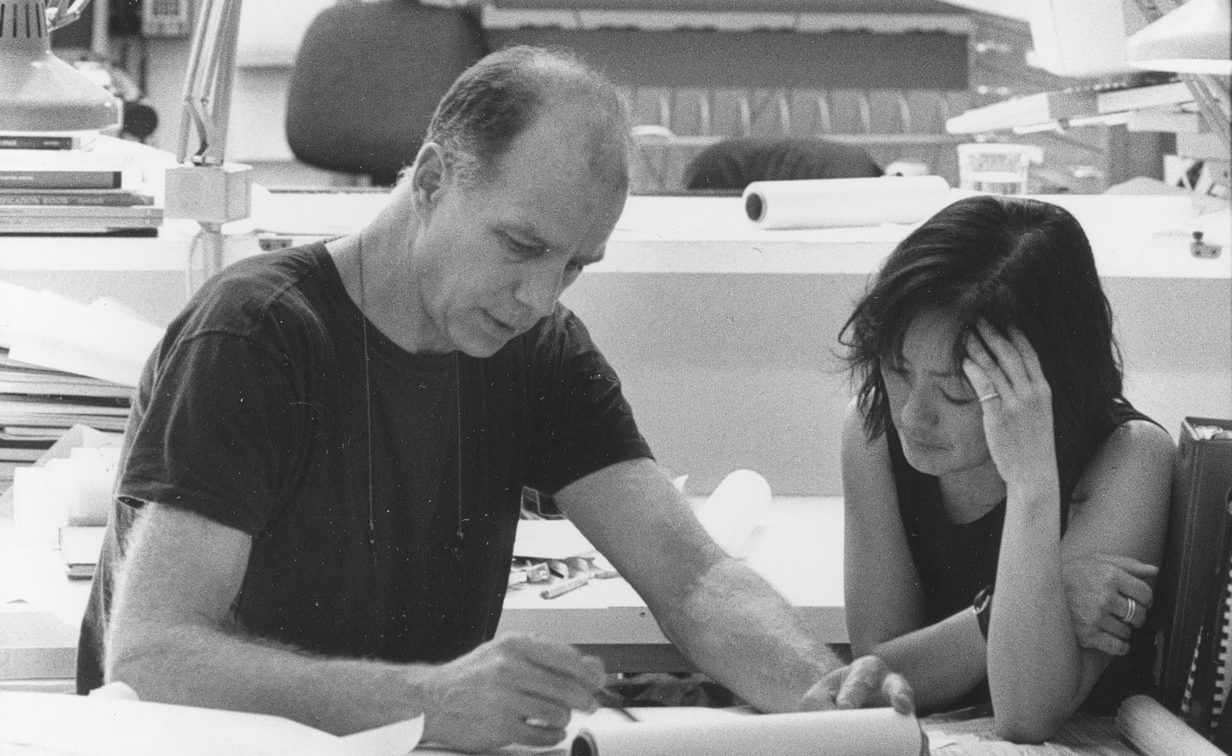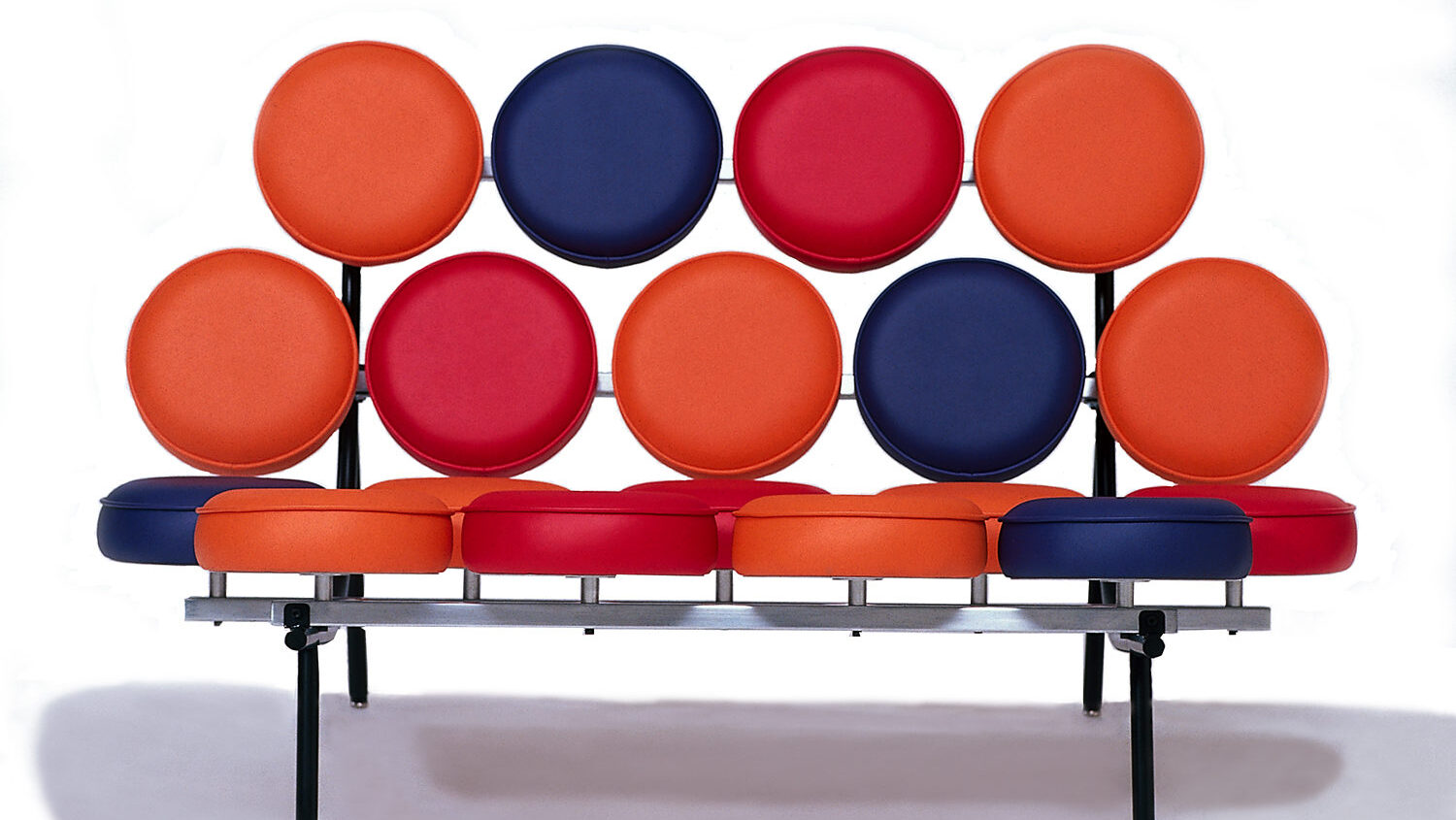2003 National Design Award Winners

Celebrate design
The National Design Awards program celebrates design as a vital humanistic tool in shaping the world, and seeks to increase national awareness of design by educating the public and promoting excellence, innovation, and lasting achievement.
Lella and Massimo Vignelli
Lella and Massimo Vignelli live and breathe design. Born and trained in Italy, they started their own office in Milan in 1961, and co-founded Vignelli Associates in New York ten years later. Their diverse design contributions have brought each of them international acclaim and numerous honors. Pursuing a multidisciplinary practice on the highest level, their work includes graphic identity programs, publications and print materials of all kinds, household and office furnishings, housewares, interiors and exhibition designs. The resulting cross pollination between two and three dimensional work allows the Vignelli’s to meet clients’ needs and exercise better control of a given design program. Working with great focus and dedication, they are gifted in bringing together many complex considerations into visually powerful, intellectually elegant and classic designs. Always leaders on the frontline of the design profession, the Vignelli’s are mentors and humanitarians at the same time. Notable projects include New York and Washington’s subway signage and maps; the interior of St. Peter’s Church at Citicorp Center; Venini lamps; Heller dinnerware; furniture systems for Poltrona Frau; and identity programs for Knoll International, Bloomingdales, Saks Fifth Avenue and American Airlines.
Ieoh Ming Pei
Ieoh Ming Pei’s long and distinguished career as one of our century’s most important architects began when he moved to the United States from his native China to study architecture at the age of 17. Since then he has completed a vast range of iconic designs for many powerful international clients, including philanthropic families, universities, hotels, banks and major cultural institutions. At age 86, Mr. Pei still travels the world to oversee each project to areas such as the Middle East, Asia and Europe. He incorporates the latest technologies into his clean, timeless geometric forms. Despite his international acclaim, Mr. Pei remains a true artist, not bound by narrow stylistic constraints, but inspired by the unique physical and cultural context of each individual building. He has never become lost in the “celebrity of architecture” and is widely admired for his knowledge of contemporary art, his civic spirit, and his generosity to fellow architects – whether they are peers or young students. Among Mr. Pei’s best known works include the East Wing of the National Gallery of Art, Washington, DC; John F. Kennedy Library, Boston; Myerson Symphony Center, Dallas; Rock & Roll Hall of Fame, Cleveland; the Grand Louvre, Paris; Miho Museum, Kyoto; Bank of China, Hong Kong; and Four Seasons hotels around the world.
DESIGN PATRON
This award was created in 2001 to recognize outstanding support and patronage within the design community. Unlike the jury-selected National Design Awards, the recipient of the Design Patron Award was chosen each year by the Museum’s director.
Gordon Segal
When Gordon and Carole Segal returned from their honeymoon in 1961, they wondered why the simple, well-designed tableware they had seen in their travels was not available in the United States. Subsequently they opened a housewares store in the Old Town section of Chicago, and displayed their first shipment on the crates and barrels on which they arrived. The name “Crate and Barrel” and thus a store were born. Gordon Segal has grown Crate and Barrel to a national home furnishings retail chain, carrying an eclectic but carefully edited collection of furniture and housewares. Insisting on the highest design standards, Segal established a talented architectural department within his company, and their designs have won several awards from the American Institute of Architects and the Chicago Athenaeum. He and Crate and Barrel have supported numerous charitable and design-related causes, such as a design award at the Israel Museum in Jerusalem; and the Carole and Gordon Segal Design Library at Illinois Institute of Technology. Segal also serves on the boards of the Art Institute of Chicago and Northwestern University. With a motto “stay humble, stay nervous”, he is sure to continue to lead Crate and Barrel forward to new successes of design excellence for all homes.
Target
Target’s corporate emphasis on good design and aesthetics is central to its success as a business and a brand. As a “curator” of good design, the company commissions product lines by some of the most talented designers today – including Michael Graves, Philippe Starck, Isaac Mizrahi and Stephen Sprouse — to expand the store’s product labels at modest prices. From its headquarters in Minneapolis, Target has democratized design and made a major impact on the education of the American public about its daily benefits. A brilliant retailer, the company’s design savvy extends to its store design, advertising, branding and graphic image as well, all of which embody the Target “Fast, Fun and Friendly” ethic. Today over 96% of American consumers recognize the red bull’s eye without any further explanation.
Billie Tsien and Tod Williams
Billie Tsien and Tod Williams have worked together since 1977 and have deliberately stayed small, focusing on a few projects at a time and choosing to work slowly in a world characterized by speed. Their architectural designs are based on a profound sense of optimism and the conviction “that is possible to make places on earth that can give a sense of grace to life.” True craftsmen, Tsien and Williams design with exquisite attention to detail in surprising ways, creating welcoming environments for their residential, institutional and cultural clients. Some of their best known buildings include The American Folk Art Museum, The Scripps Institute for Childhood and Neglected Diseases, the Cranbrook School’s Natatorium and the Phoenix Art Museum.
Robert Greenberg
A giant in his industry, Robert Greenberg keeps in tune with the constant evolution of the communications field and consistently maintains the highest standards of excellence and innovation. In 1977 when he co-founded his company, R/GA, with his brother, it was the first firm to bring print, television commercials and feature films under one roof. R/GA has created visual effects for over 400 feature films for clients such as Zelig, Predator, Braveheart and Seven and for over 4,000 television commercials for clients such as Masterpiece Theatre and NOVA. Most recently, Greenberg has led the transition of his 200-person company into its new focus on interactive and digital design for Fortune 500 companies, universities and cultural institutions.
SPECIAL COMMENDATION FOR CORPORATE ACHIEVEMENT
This award was given by the Jurors in recognition of outstanding achievements in the design stewardship of the public realm.
General Services Administration’s Design Excellence Program
The U.S. General Services Administration’s Design Excellence Program will be awarded a Special Commendation in the Corporate Achievement category. In 1961, Daniel Patrick Moynihan wrote “Guiding Principles for Federal Architecture” as one page of a much larger report to President John F. Kennedy on federal office space. Although the principles influenced the creation of the General Services Administration, the organization has flourished in the last ten years with GSA leadership and the support of clients such as members of the Federal Judiciary and the private-sector design community. It has become the steward of many of our nation’s most valued architectural treasures, and the builder for the federal civilian government. The program has continued this tradition within a massive government agency, commissioning some of America’s leading architects, such as Richard Meier, Henry N. Cobb, Steven Davis, and Thom Mayne to design public buildings of lasting quality across the country.
Michael Van Valkenburgh
Michael Van Valkenburgh devotes himself to the practice of landscape architecture with great integrity and passion. A professor and mentor in Harvard’s Graduate School of Design for over twenty years, he has simultaneously carried out a prolific and diverse practice. Van Valkenburgh has designed and built more than 300 gardens; parks; and corporate, civic and institutional landscapes across the country and abroad. While much of his early work was created for residential clients, public commissions have been his focus over the past ten years. Recent and current commissions include Pittsburgh’s Allegheny Riverfront Park, a master plan for Brooklyn Bridge Park, Teardrop Park in Battery Park City, and the redesign of Pennsylvania Avenue at The White House.
Tom Ford
Tom Ford is a rare combination of a gifted designer and an astute businessman. He believes that “good design should have the power to communicate long after the original moment has passed.” Ford’s timeless designs beautify the body as they celebrate sensuality. They have attracted worldwide attention through his role as Creative Director of The Gucci Group and designer for both Yves Saint Laurent Rive Gauche and Gucci. Ford is a serious art and design collector who now divides his time between the United States, London, Paris and Milan. His breadth of interests and global view are evident in his approach to running a luxury fashion house, where he ensures that everything – from the clothing, to the store environment, to the ad campaign and the fragrance lines – creates an experience of beauty and enhancement of life.
Herman Miller
For over 65 years Herman Miller has been a design leader through thick and thin, advancing both the science and the art of furniture design. Based in Zeeland, Michigan, the company pioneered modern American residential furniture in the 1930s and 1940s through its unique relationships with Gilbert Rohde, George Nelson and Charles Eames. Thirty years later, Herman Miller transformed the way office workers experience their environments by championing facility management and ergonomics. Today the company continues the tradition of commissioning distinguished designers including Ayse Birsel, Bill Stumpf and Frank Gehry. It has reduced the costs of high style furniture and made it widely accessible, while simultaneously insisting on design excellence, innovation and integrity in all of its products.
